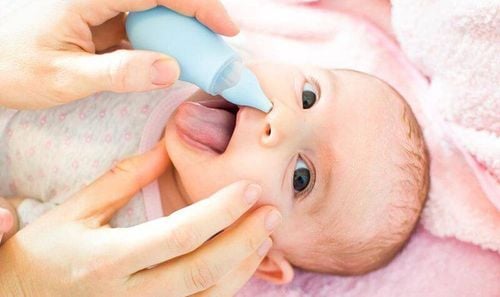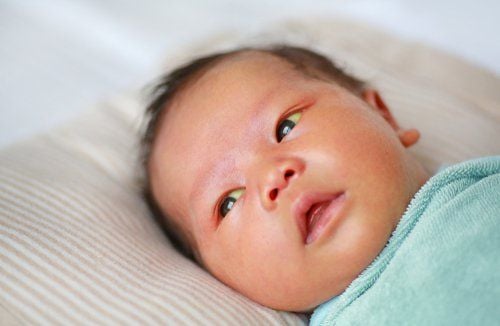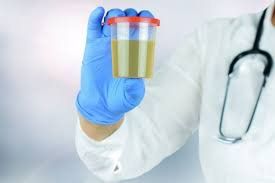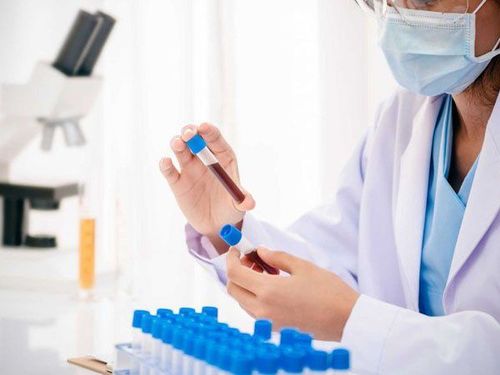Phototherapy is considered one of the most effective, easy-to-implement, and economical methods for treating neonatal jaundice. However, the effectiveness of this treatment method largely depends on the intensity and wavelength of light emitted by the lamp, the distance from the lamp to the newborn, and how to choose a suitable phototherapy device.
1. Characte/ristics of jaundice in newborns
Jaundice is a condition where the skin and mucous membranes develop a yellow hue due to increased bilirubin levels in the blood. Neonatal jaundice is a physiological phenomenon caused by increased breakdown of fetal red blood cells, reduced function of metabolic enzymes produced by the liver, and increased enterohepatic circulation. In some cases, when the indirect bilirubin levels become too high in the blood, it can progress to kernicterus. This complication depends on several factors, such as: gestational age (premature or full-term), blood group incompatibility, and the health status of the newborn.
- Physiological jaundice occurs in about 60% of full-term newborns and 85% of premature newborns, typically noticeable on the third day after birth. Jaundice peaks between 5 to 7 days postpartum but should not exceed 7 – 7.5 mg%, then gradually decreases and can last up to 14 days.
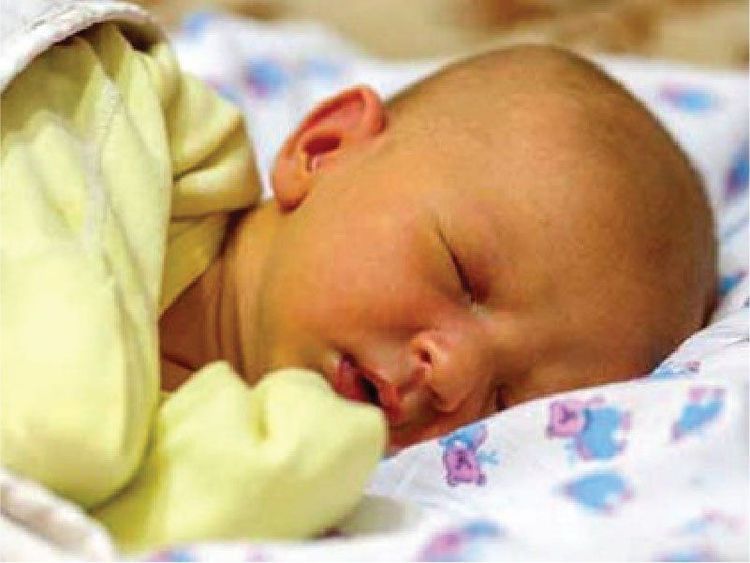
- Pathological jaundice: This type appears within the first 24 hours after birth, is severe with accompanying risk factors, and bilirubin levels exceed the therapeutic threshold.
Early jaundice appearing within the first 48 hours is abnormal, potentially caused by hemolysis (Rh incompatibility, ABO blood group incompatibility), or prematurity (born before 37 weeks).
Jaundice occurring between the third to ten days is more common and may result from prematurity (less than 35-37 weeks), bruising, hematomas, polycythemia, delayed meconium passage, significant dehydration, breastfeeding, Asian ethnicity, or maternal history of diabetes, especially with large for gestational age infants.
Jaundice exceeding 14 days indicates possible causes if indirectly increased, including breastfeeding jaundice, sepsis, hypothyroidism, or congenital deficiency of glucuronyl transferase. Direct bilirubin elevation is commonly due to congenital biliary atresia or hepatitis, thus necessitating further investigation related to liver and biliary conditions.
2. Why do newborns need phototherapy?
When bilirubin levels rise excessively in the blood (> 22 mg%), there is a risk of kernicterus. In at-risk infants (premature, asphyxiated, hypoglycemic, with brain injuries, or cerebral edema), this threshold may be lower.
Indirect bilirubin is toxic to brain cells and can destroy nerve cells by inhibiting intracellular enzymes in specific areas, such as the basal ganglia, thalamus, and hippocampus. Moreover, both the brainstem and cerebellum can become yellowed and remain so, leading to severe repercussions, even as jaundice declines with or without treatment.
The treatment goal for jaundice is to rapidly reduce the level of free bilirubin in the blood and prevent neurological damage due to excessively high bilirubin levels. The primary treatment methods for elevated indirect bilirubin jaundice are: phototherapy and exchange transfusion.
- Phototherapy is applicable for treating and preventing jaundice in all newborns.
- Exchange transfusion is reserved for infants with bilirubin levels that are high depending on their age and risk factors. Before and after exchange transfusion, phototherapy is still actively applied to the infant.

Phototherapy is a cost-effective, efficient, and safe method indicated for all cases of increased free bilirubin, regardless of the cause of jaundice.
Two types of light are used for treating jaundice in infants: blue light and halogen lamps. Both types emit light within the wavelength range of 400–480 nm. Under this light's effect, free bilirubin (which is insoluble in water and fat-soluble, easily penetrates the skin, mucous membranes, and the brain, causing neurotoxicity) is converted into water-soluble photo-bilirubin, which is excreted via bile and urine, thus non-toxic to nerve cells.
3. What can happen during the phototherapy process?
Infants are placed in a temperature-controlled incubator at 28°C, bare except for eye and genital coverings. The lamp should be positioned 50 to 60 cm away, ensuring direct light exposure on the infant's skin.
Positioning should be adjusted every 2 to 4 hours, with continuous exposure for 24 to 48 hours, pausing only for feeding, until bilirubin levels fall below specified thresholds depending on the bilirubin level.
During phototherapy, an infant's stool may turn green, and urine may become darker. They often experience dehydration during this treatment, necessitating an increase in fluid intake by 10 - 20% above their usual requirements.
Throughout the light therapy process, the child's bilirubin levels are continuously monitored. Depending on the child's response to the light therapy, the doctor will decide whether to stop, continue the light therapy, or if a blood transfusion is necessary.
4. What may happen after the child has undergone light therapy?
Some side effects of light therapy may include skin darkening, "bronze baby syndrome," diarrhea, burns, dehydration, and rashes. These side effects will resolve after stopping the light therapy. The light therapy reduces the level of free bilirubin in the blood. Therefore, after the light therapy is stopped, the child's skin may still appear yellow. Parents need to continue monitoring their baby and seek immediate medical attention at the nearest healthcare facility if they notice any comeback signs of jaundice.

Jaundice due to increased levels of free bilirubin is a common phenomenon in newborns, especially in premature infants. Treating jaundice with light therapy is simple, cost-effective, safe, and effective. However, light therapy must be initiated early before complications of kernicterus occur. Therefore, when jaundice symptoms are detected (within the first six days after birth), it is essential to take the child to specialized neonatal healthcare facilities for appropriate examination, consultation, and treatment.
The Pediatrics Department at Vinmec International General Hospital is a welcoming place for treating newborn health issues, including jaundice. Vinmec is equipped with a safe and easy-to-use light therapy system, allowing the infant to be breastfed while undergoing treatment. It can also include additional glucose 10% infusions. There are various types of light therapy devices suited for different jaundice cases: cradle lamps (where the baby lies directly underneath), double-sided lamps (used for intensive light therapy), and blanket or wrap lamps (which are very convenient for parents, allowing them to hold the baby for breastfeeding while providing light therapy).
Please dial HOTLINE for more information or register for an appointment HERE. Download MyVinmec app to make appointments faster and to manage your bookings easily.
Distinguish between physiological neonatal jaundice and pathological jaundice
MORE:
Neonatal Jaundice What is nuclei of the brain? Distinguish between physiological neonatal jaundice and pathological jaundice
To arrange an appointment, please call HOTLINE or make your reservation directly HERE. You may also download the MyVinmec app to schedule appointments faster and manage your reservations more conveniently.

